00 flour is a bit of a conundrum to people who live in the United States.
That’s not because the flour is particularly unusual, but rather that it’s milled in Italy and categorized, then, by a different metric than American-based flour. However, even with the international divide, answering the question, “What is 00 flour?” isn’t too difficult.
This guide to double zero flour will not only help you understand the benefit of using Italian 00 flour but will also include a number of recipes that’ll make your food taste significantly better once you substitute Type 00 flour for your standard bread flour.
00 Flour: The Basics
Americans label different types of flour depending on how much protein each type has within it. That protein impacts the amount of gluten the flour will produce when used. This dramatically affects the taste and final look of your bakes.
In Italy, however, flour is categorized by its coarseness. Emma Christensen of Kitchn elaborates on this, saying that if flour in Italy is labeled with a single zero, it’s a particularly coarse flour.
Comparatively, 00 flour is considered between coarse and fine – a median of flours. The coarseness of flour also impacts the taste of a final bake, but in different textures.
It’s worth noting that you can still buy 00 flour in different shades. For example, some brands of 00 Italian flour are golden in color, while others are the standard white.
Typically, golden flour is better for double zero pasta, whereas white flour is better for bread, but they can be easily substituted for one another.
00 Flour vs Bread Flour
Because bread flour is typically labeled by American standards and 00 flour is not, the two can be a little difficult to compare.
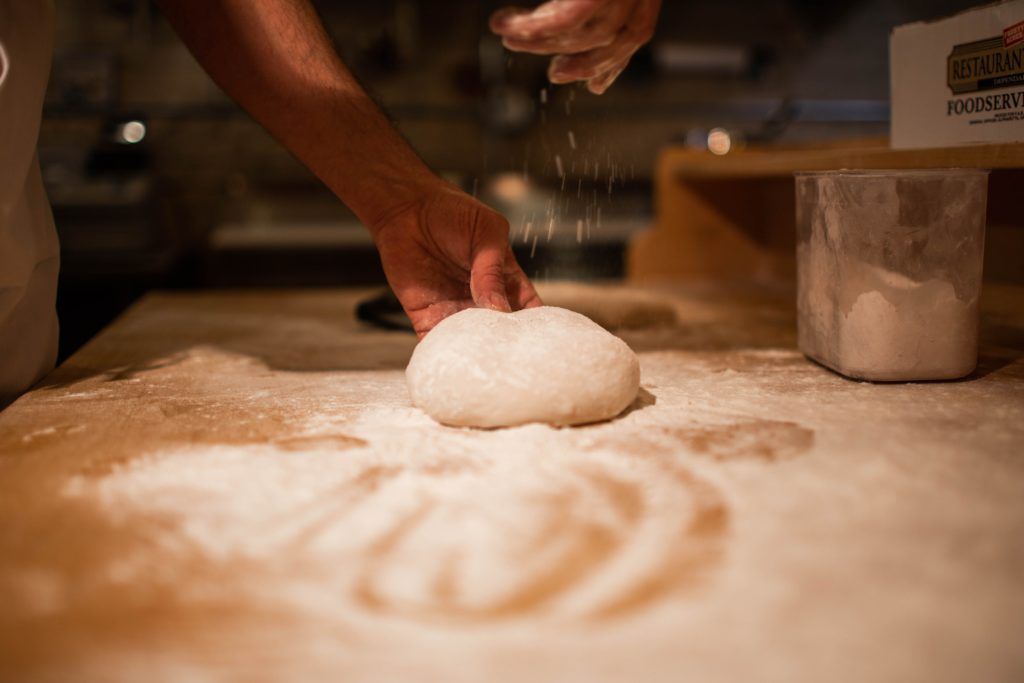
Nonetheless, the writers at Virtuous Bread make the difference fairly clear. A loaf of bread baked with 00 flour of either color will have air pockets that are less equally distributed than those in a loaf baked with bread flour.
The color of the two loaves will also be different. This is because bread flour has a higher gluten content than 00 flour, which dramatically impacts the loaf of bread’s rise.
Typically, you’ll be using 00 flour to make pizza dough. Creating pizza dough with bread flour doesn’t turn out well because of that difference in gluten content.
00 flour will ensure that your pizza dough turns out more like a flatbread, whereas pizza dough made with bread flour will be too puffy and soft.
00 Flour Substitutes
As such, bread flour can’t be easily substituted for 00 flour. However, there are alternatives to 00 flour that have even less gluten, or that can be more commonly found using United States’ metrics.
According to The Pizza Lab, one of the biggest flour brands in the United States announced a 00 clone meant to serve as a competitor to Italian-imported flour. This may be more cost-effective to buy than the foreign variety and easier to use in the kitchen.
Likewise, Roberto Caporuscio has produced a 00 gluten-free flour so that people with Celiac can still make pizza dough that won’t aggravate their illness.
This dough is made out of rice starch, corn starch, soy flour, and sugar. Although what you get with this flour won’t be identical to that of 00 flour, it’ll still allow you to appreciate the crispness 00 flour provides.
Here’s a video explaining more about Italian flour.
What Is the Difference Between 00 Flour and All Purpose Flour?
Again, 00 and 0 flour refers to Italian milled flour used commonly in pasta making. It is similar to unbleached all purpose flour or plain flour. This flour is a combination of hard and soft wheat that is fine and creates a much silkier dough while also maintaining some chewiness.
Another difference between 00 flour and all purpose flour is how the gluten behaves. The gluten commonly found in red wheat flour is strong and elastic, while the gluten found in durum wheat flour is strong but lacks the same elasticity. So, the biggest difference you will find when substituting 00 flour for an all purpose flour is the texture.
However, if you choose to combine a bread flour with 00 flour, you will find this perfect combination will result in a chewier and crispier pizza crust.
Reasons to Have 00 Flour in Your Pantry
Bread flour and 00 flour are considered specialty flours and are not items most have on hand in their pantry at any given time. However, if you are a baker, then they are definitely pantry staples.
If you want to create delicious Italian recipes, including pizza dough and fresh pasta, you want to pay a slightly higher price tag to have these specialty flours in stock. Remember, 00 flour is often considered the Gold Standard for Italian cooking because of the texture it allows you to achieve.
00 flour is finely ground and has a lower gluten content than most other flour types. So, while you can substitute the 00 flour for all purpose flour, do you really want to?
When to Use Other Flour Types
Now you may be wondering about the other flour types and when it is best to use them over 00 flour or all purpose flour. Here is a brief breakdown.
- Whole Wheat vs White: You will find that whole wheat flour is more absorbent than white flour and will require more liquid. This results in an extra sticky dough that many people often find challenging to work with. On the other hand, white whole wheat is sweeter, has a lower tannin content, and results in a lighter color when baking.
- Nut Flour: You will also find different nut flour options like almond flour. This is best when combined with flours containing gluten and is used in many cookie and tart recipes. Almond flour should never be used for bread recipes because it can be very powdery and does not contain gluten on its own.
- All Purpose Flour: This flour is used in several recipes and can be used as a substitute for many other flour options, as you have already learned. However, it is best for cookies, baked bread, and other baked goods, and there really are no restrictions on its use and application.
- Durum Flour: this is made of hard wheat. It has high protein content, even higher than bread flour, making durum flour a good choice for pasta. It helps the pasta hold its shape and allows you to achieve a somewhat rough texture that is easier for sauces to adhere to.
- Wholemeal Flour: this flour contains 100% wheat grain and is high in nutrients. It also has a rough texture, making it good for more rustic baking like soda bread and cinnamon buns.
- Bread Flour: also commonly known as high gluten flour, bread flour has a high protein content. When kneaded, gluten develops and creates a chewiness to your baked goods. It is best for pizza dough, pretzels, bagels, and artisan breads.
Best Recipes for Double Zero Flour
With all that in mind, it’s easy to imagine the dinners and desserts you could make using 00 flour. While there will be less gluten in each dish you make, 00 flour is still ideal for pasta, pizzas, and even some kinds of cakes.
Take a look at the three recipes listed below and see if you are inspired to try your hand at a unique, delicious dish in the near future.
Chocolate Cake with Cream Cheese Icing
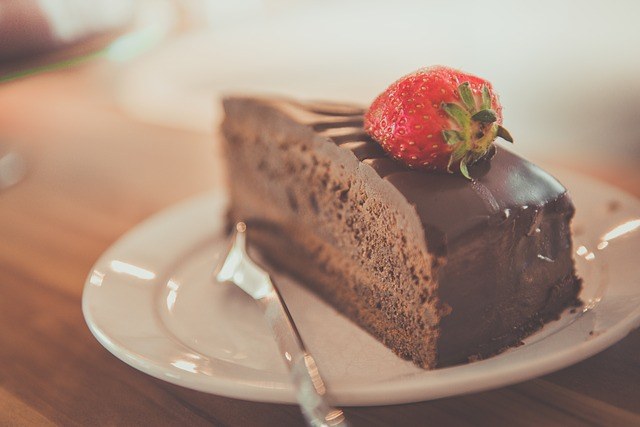
Who doesn’t like to start with dessert?
This chocolate cake will be moist and rich, making it a delight to taste. Partner that with the cream cheese frosting, and you’re in for a real treat.
This recipe is loosely based on the recipe shared on the Food Network.
Ingredients
Chocolate Cake
- 1 ½ stick of unsalted butter, with some extra used for buttering cake tins
- 3 eggs
- 2 cups of 00 flour
- 2 cups + 2 tbsp. of granulated sugar
- ¾ cup of unsweetened cocoa powder
- ½ cup of roughly chopped chocolate
- ¼ cup of milk
- 2 tsp. of vanilla extract
- ¾ tsp. of baking soda
- 1 ½ tsp. of baking powder
Cream Cheese Icing
- 16 oz. of cream cheese, softened
- ½ cup of butter, softened
- 3 cups of confectioner’s sugar
- 1 ½ tsp. of vanilla extra
How to Make the Icing:
- Step 1: Place the cream cheese into a medium-sized bowl
- Step 2: Beat the cream cheese with a mixer until smooth
- Step 3: Add butter into the cream cheese mixture and continue to mix until it’s smooth
- Step 4: ½ cup at a time, add the confectioner’s sugar, creaming the mixture until it’s smooth before adding the next ½ cup
- Step 5: Add in vanilla and beat until everything is well incorporated
- Step 6: Chill in the fridge if you don’t intend to use the icing that day; keep at room temperature otherwise
How to Make the Chocolate Cake:
- Step 1: Preheat your oven to 350 degrees Fahrenheit
- Step 2: Butter two 9-inch cake tins and line the bottoms with parchment paper. After this, lightly flour them
- Step 3: In a large bowl, combine flour, baking soda, baking flour, and salt
- Step 4: In a separate bowl, cream the butter until smooth
- Step 5: Add granulated sugar to the butter mixture and continue to cream until smooth
- Step 6: Add cocoa powder and vanilla to the bowl and mix until everything is well incorporated
- Step 7: One at a time, add the eggs and continue to mix
- Step 8: On the stove, heat the milk to a simmer
- Step 9: Add chopped chocolate to the warm milk and stir until melted. Take from the heat immediately and let cool – but not too much
- Step 10: Add the chocolate mixture to the butter mixture
- Step 11: Add the butter mixture to the dry ingredients. Stir until smooth
- Step 12: Divide the batter between the two cake pans and make sure that the batter is level
- Step 13: Bake for 30 minutes, or until a toothpick pressed into the center of the cake comes out clean
- Step 14: Remove the cakes from the pans and leave them on a wire rack to cool. Remove the parchment paper from the bottom of the cakes
- Step 15: If necessary, level the cakes
- Step 16: Only once cool, add icing to the bottom tier of the cake and build the layers
- Step 17: Frost the sides of the finished cake
- Step 18: Chill the cake until it is time to serve
Spinach Ravioli
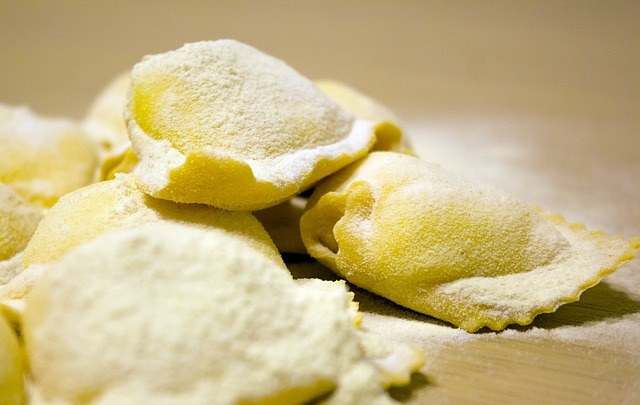
For a dish that’s better suited for dinner than dessert, let’s take a look at homemade pasta and the strength that using 00 flour lends to ravioli.
This recipe is loosely based on the recipe shared on Honest Cooking.
Ingredients
Pasta
- 5 cups of 00 flour
- 8 eggs
Filling
- 10 oz. fresh baby spinach, washed and dried
- 8 oz. of ricotta cheese
- 1 egg
- ½ cup of Parmesan cheese
- ¼ tsp. of nutmeg
- Salt, to taste
How to Make the Filling:
- Step 1: Cook the spinach in a frying pan until decreased in size and tender
- Step 2: Place the spinach, once cooled, in a paper towel and squeeze all the water out of it that you can
- Step 3: Chop the dried spinach into rough pieces
- Step 4: In a bowl to the side, mix together the ricotta, egg, Parmesan, nutmeg, and salt
- Step 5: Once the spinach is prepared, add it to the cheese mixture
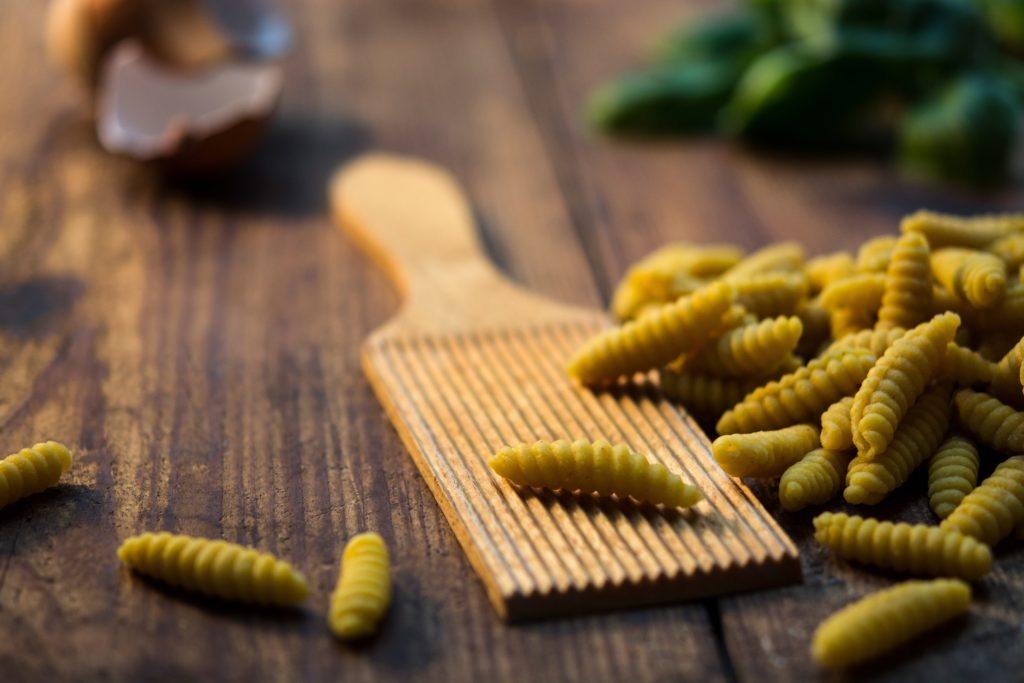
How to Make the Pasta:
- Step 1: Divide the flour in half and create two mounds on your countertop
- Step 2: In two separate bowls, beat 4 eggs together
- Step 3: Little by little, pour each bowl of eggs into one of the flour mounds. Don’t let the eggs slip out of the well you created
- Step 4: With a fork or your fingers, gently mix the eggs into the flour. When the eggs are fully absorbed, add more until each bowl is empty
- Step 5: Only add enough flour to create a dough that isn’t sticky. As soon as the dough is no longer gummy, remove the dough ball that’s formed from the mound and spread the rest of the flour out across your countertop
- Step 6: Knead the dough for about 10 minutes or until the dough becomes silky
- Step 7: Cover the dough with plastic wrap and let it sit for 30 to 45 minutes
- Step 8: Roll out each ball of dough separately
- Step 9: On one piece of rolled out dough, place dollops of filling – one to two inches apart
- Step 10: Once you’ve run out of filling, place the second piece of rolled out dough on top of the dough with filling on it
- Step 11: With your fingers, pat out pockets in your ravioli
- Step 12: With a pizza cutter, cut your dough into filled squares
- Step 13: With your fingers or a fork, go around the edges of each ravioli and make sure the pasta is sealed
Cooking
- Step 1: Fill a pot with 4-5 cups of water and salt to taste
- Step 2: Bring the water to a boil
- Step 3: Cut the heat after the water begins to boil and add the ravioli
- Step 4: Let the ravioli cook until the pasta begins to float, between 3 and 5 minutes
- Step 5: Remove from the pot, add to your favorite sauce, and serve
Pizza Dough
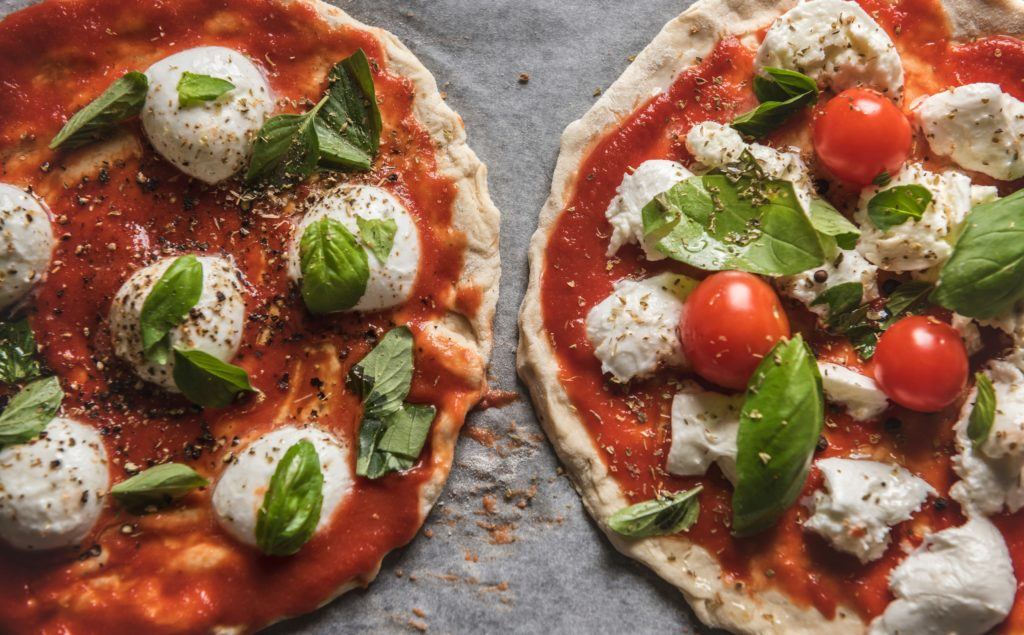
Finally, we can take a look at an age-old classic: pizza dough.
While it’s debated whether or not pizza was invented in Italy, you should still use 00 flour if you want a tight and delicious dough. This recipe is loosely based on the one shared by the BBC.
Ingredients
- 3 ¾ cups of 00 flour, with some additional for kneading the dough
- 1 1/3 cups of warm water
- 1 ¼ oz. packet of active dry yeast
- 1 ½ tsp. of salt
- 1 tbsp. of sugar
- 3 tbsp. of olive oil
Method
- Step 1: In a medium bowl, mix together the water and sugar, then add the packet of yeast. Let the mixture sit for ten minutes until foamy
- Step 2: Add olive oil to the yeast mixture
- Step 3: In a separate, large bowl, mix together the flour and salt until well combined
- Step 4: Make a well in the center of the dry ingredients, then add the yeast mixture. Stir until the dough begins to form a sticky ball
- Step 5: Turn the dough out onto a well-floured surface. Knead until smooth
- Step 6: Allow the dough to rest until it’s doubled in size – about 1 ½ hours
- Step 7: Punch down the dough, knead until smooth, and then let it rest for another hour
- Step 8: Pre-heat your oven to 400 degrees Fahrenheit
- Step 9: Roll out your dough until it creates a wide circle, or divide the dough and create smaller crusts
- Step 10: Top the crust(s) with the sauce and toppings of your choice
- Step 11: Bake your pizza(s) for 10-12 minutes or until the crust is deep, golden brown
This video shows an example of how to make pizza dough with double zero flour.
Where To Buy 00 Flour
Are you having a hard time finding 00 flour? Try searching for double zero flour or doppio flour.
Caputo Flour
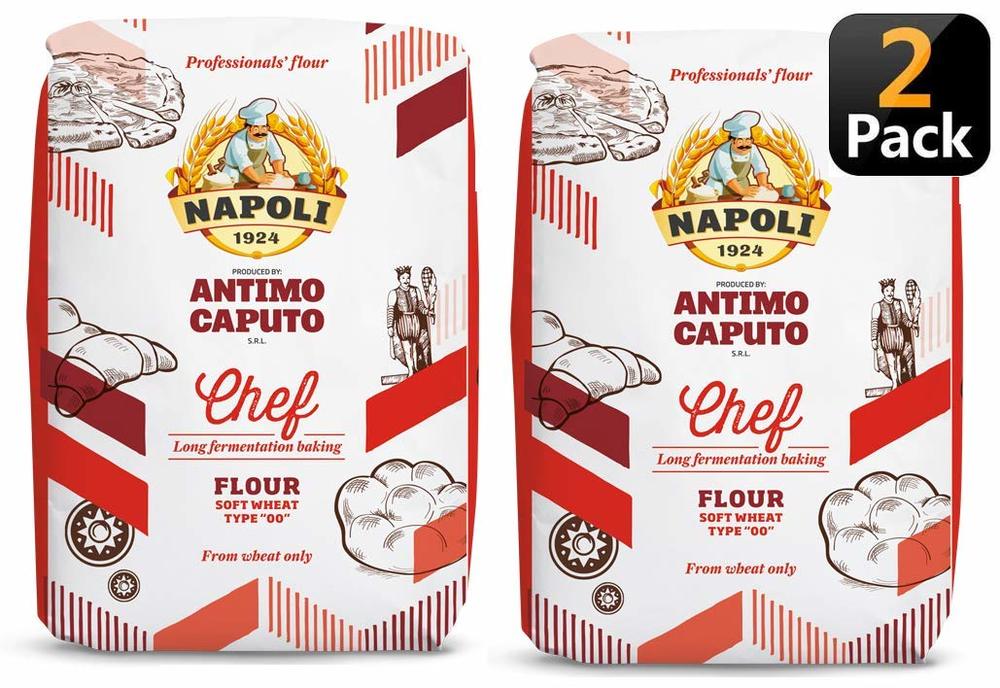
Caputo Flour is considered the Gold Standard in the US when it comes to 00 flour options you can purchase. It originated in Italy and has a strong elastic gluten that is great for any home chef looking to make delicious baked goods. Caputo chef’s flour is slowly milled and contains no additives.
Tipo 00 Flour
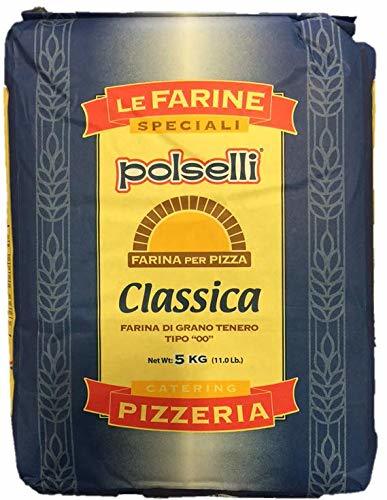
This 00 flour is ideal for pizza, pastas, and more. It is all-natural, unbleached, unbromated, and contains no additives. It has been formulated for an 8+ hour rise. It is 100% wheat flour that is perfect for long fermentation baking. It was milled in a small town that can be found south of Rome, Italy.
King Arthur 00 Pizza Flour
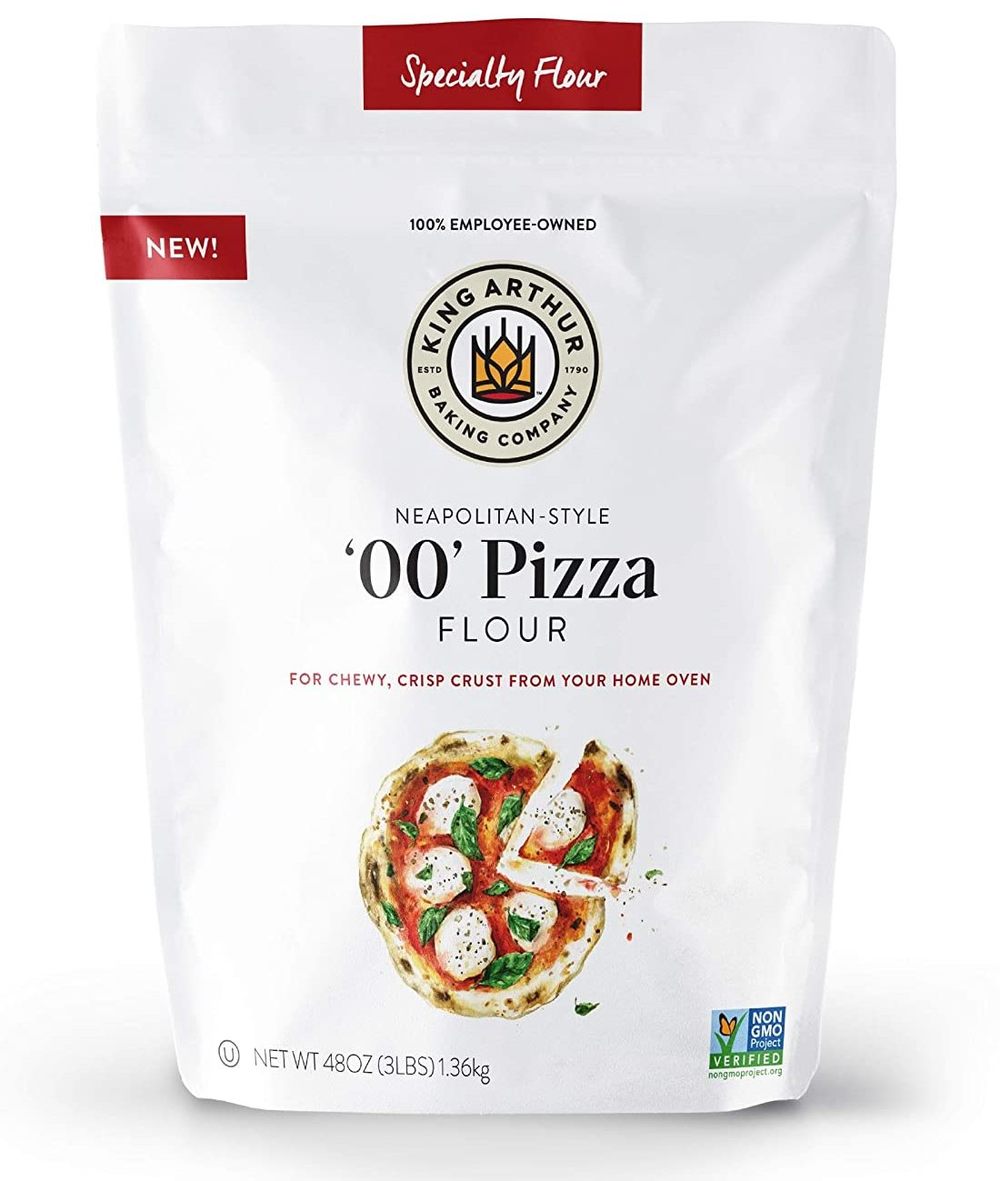
If you want to make a delicious homemade pizza, you definitely want to try out this King Arthur double zero flour. It is a specialty flour made of 100% American grown wheat and is finely milled. It allows you to achieve a thinner crust in the middle with a crunchy rim, typical of a great Neapolitan-style pizza.
All of these double zero flour options can be purchased now on Amazon. You may also be able to find 00 flour in your local supermarket or specialty grocery store.
Final Thoughts
It should be easy to find a dish that suits your tastes with all of those recipes available. Double zero flour may have less gluten than other types, but that’s hardly a bad thing.
Since this foreign variety makes some of the best pizza doughs, bread rolls, pasta, and Italian treats around, it’s worth bringing into your kitchen, either for Italian classics or your own traditional dishes.
Have you tried baking or cooking with 00 flour?
